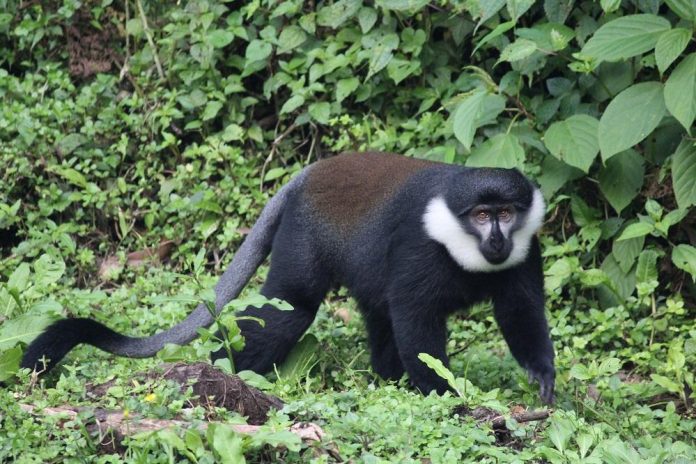The African Primatological Society Conference, the second of its kind, recently took place at the Imperial Botanical Beach Hotel, in Entebbe. Running under the theme “Primate Conservation in Africa: Challenges and Opportunities” with a focus on policy, practice, and sustainability, the conference affirmed many decisions.
When he spoke, Uganda’s Tourism Minister Prof. Ephraim Kamuntu, noted that a total of over 10% of Uganda’s landscape is gazetted for conservation. “This definitely shows our commitment towards protecting the gorillas and other endangered primate species,” he said. “There is hope for the conservation of primates and I am happy that this conference aims to strengthen, position, and serve as a platform for knowledge.”
He added that the knowledge shared therein would be beneficial among researchers, conservationists, education practitioners, donors, and decision-makers and has been hosted in Uganda; the primate capital of the world. He was quick to add about his worry of how easily the great apes could get exposed to human-related diseases.
“A concerted effort is needed to address these threats, through increasing the level of involvement and commitment from stakeholders,” he said. Minister Kamuntu said that besides research, proper and special conservation areas ought to be gazette and health environmental practices adopted. He believes that this shouldn’t be a case of just Uganda, but Africa as a whole should be deliberate about this.
The Vice President of Africa Primatological Society (APS), Dr. Gladys Kalema-Zikusoka gave some practical ways in which the primates would be protected and allowed to thrive. She used examples of what Uganda and its partners had done to achieve this goal. “The involvement of locals in wildlife management decision making, sharing of Protected Area revenues (20%) with adjacent communities as well as the establishment of wild animal barriers like trenches (237km), buffalo wall (16km), Mauritius live fences (192.5km), and crocodile cages (12) electric fencing (10km construction ongoing at Rubirizi),” she listed. “The other measures that stood out are the use of beehives (8,557 hives), chili cakes, buffer crops like tea to prevent human-wildlife conflicts, regulated protected area resource access and empowerment of communities to engage in alternative livelihoods like community tourism.”
Facts about Uganda’s primates
According to information retrieved from Uganda Tourism Board, Uganda boasts of a rich and diverse wildlife heritage owing to its unique location at the zone of overlap between the savannah of East Africa and the rainforests of West Africa. The country is distinctly blessed with spectacular landscapes of unrivaled beauty ranging from the great rift valleys to lake basins, rolling plains, tropical forests, and vast savannahs to permanently snowcapped mountains. The numerous landforms and habitats support rich and varied wildlife species and communities.
In terms of primate richness, Uganda is host to 53.9% of the world’s remaining population of Mountain gorillas, and 8% of the global mammal diversity (which is 39% of Africa’s mammal richness). Uganda has 15 species of primates of which four of them are endangered, the mountain gorilla, chimpanzee, red colobus monkey, and golden monkey.
This rich wildlife biodiversity has been conserved through a robust policy and legal framework including the establishment of a network of wildlife Protected Areas covering about 10% of the country’s total land surface. These include 10 National Parks, 12 Wildlife Reserves, 10 Wildlife Sanctuaries, and 5 Community Wildlife Areas.
Besides the rich primate diversity, Uganda also has 19% of Africa’s Amphibian species richness, 14% of Africa’s reptile species richness, and 1,249 recorded species of butterflies. The rich wildlife endowment is the number one competitive edge to develop Uganda into a top tourism destination in Africa

























